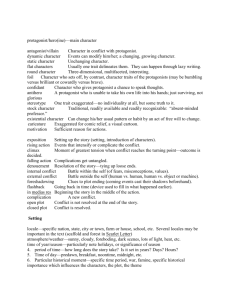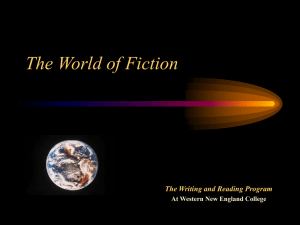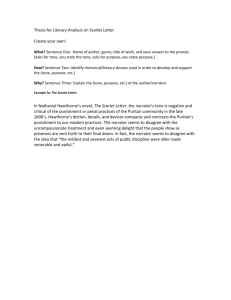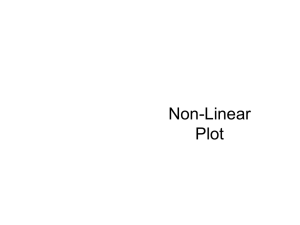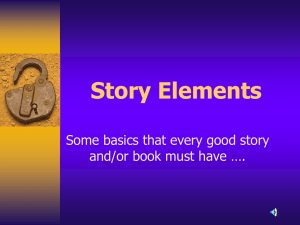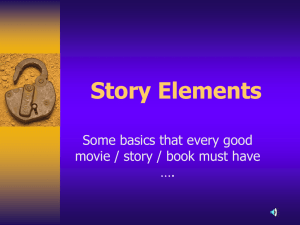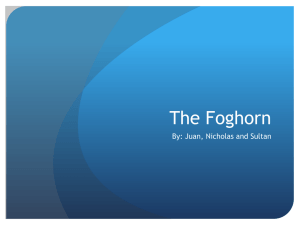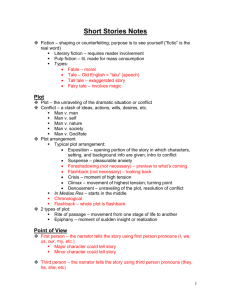Elements of Fiction 1. Plot 2. Character 3. Conflict 4. Theme 5
advertisement
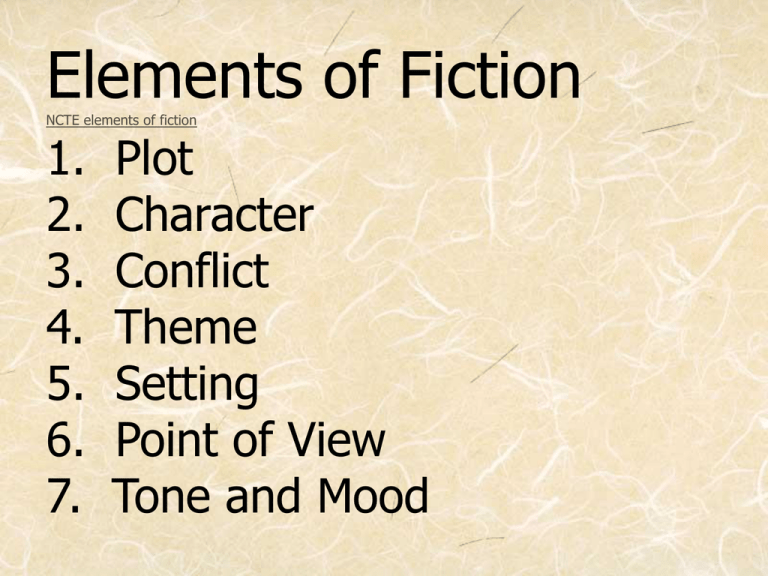
Elements of Fiction NCTE elements of fiction 1. 2. 3. 4. 5. 6. 7. Plot Character Conflict Theme Setting Point of View Tone and Mood Plot: a series of events, or action, in the story (what happens in the story) Main plot vs. Subplot--a second story, or side story, that is complete and interesting in its own right FREYTAG’S TRIANGLE Freytag’s Pyramid 1. exposition--gives the background information for the story 2. inciting incident--an incident or event which begins the central conflict 3. rising action--the central conflict is developed 4. climax--high point of interest, or suspense in the story 5. crisis, or turning point--the point of the story at which something decisive happens to determine the future course of events and the working out of the conflict 6. falling action--the events that occur after the turning point 7. resolution--the point in the story where the central conflict is resolved 8. denouement--tells the final outcome of loose ends in the plot Character--any person or figure in the story Types •main characters –Protagonist –Antagonist •minor characters static vs. dynamic--Does the character stay the same during the story or change? round vs. flat--Is the character realistic/life-like or unrealistic (a caricature)? How is a character revealed? Through… •her or his appearance or appearance of her or his possessions •her or his thoughts (omniscient narrator (or first person)) •her or his actions (what she or he does) •her or his own words (what she or he says) •others’ words (what others say about her or him) 3. Conflict--challenge that lies within the story a. types of conflicts 1. individual vs. him- or herself (internal conflict) 2. individual vs. individual 3. individual vs. society 4. Individual vs. nature 5. individual vs. God/Fate/Destiny (external conflicts) 4. Theme— • a central idea that runs throughout the story • the message of the story or poem, what the story adds up to Motif--a recurring image, symbol, or even event that occurs throughout a work of literature 5. Setting 1. definition: the time and place of the story. 2. examples: a. John Steinbeck’s Of Mice and Men takes place on a northern California ranch during the Great Depression of the 1930’s b. The Catcher in the Rye is set over a three-day period in late 1940’s New York City. 6. Point of View 1. definition: the angle from which the story is narrated 2. three most common types a. First Person stories told with “I” as the narrator usually the narrator is the protagonist, but not always (Catcher vs. Mockingbird); sometimes the narrator is a minor character b. Third Person, Omniscient stories where the narrator uses “he” and “she” and knows what’s in every character’s mind (omniscient = all knowing) most common form of narration (Of Mice and Men) c. Third Person, Limited the narrator can’t see what’s in the characters’ minds the story is presented through the protagonist’s perspective (Animal Farm) 7. Tone and Mood 1. Tone: the attitude of the author or narrator toward the story or characters (angry, playful, satirical) 2. Mood: the attitude or emotions of the reader toward the story or characters (sad, hopeful, nostalgic) 3. Example: In The Catcher in the Rye, Holden’s tone is sarcastic and angry, while Salinger wants the reader’s mood to be a sympathetic feeling and/or sadness for Holden’s trouble


